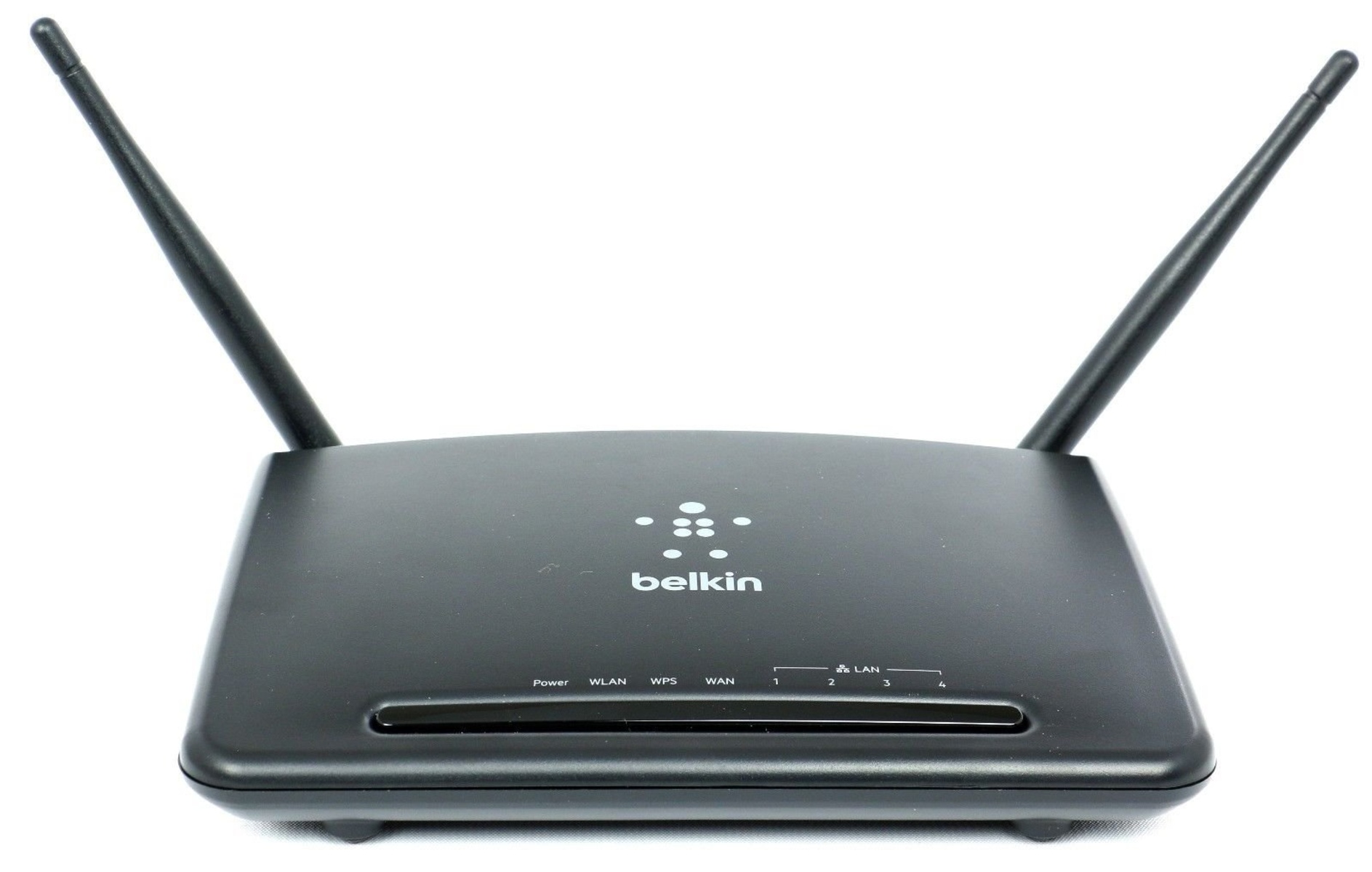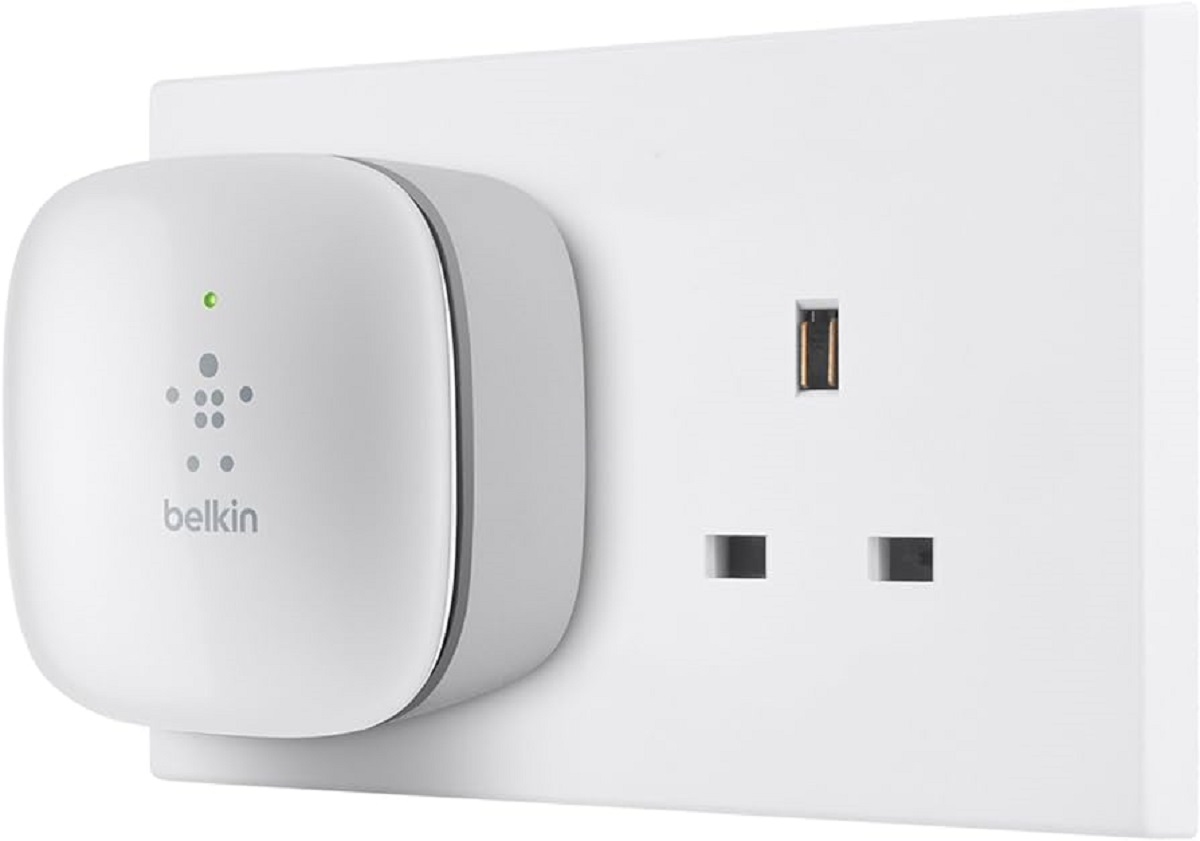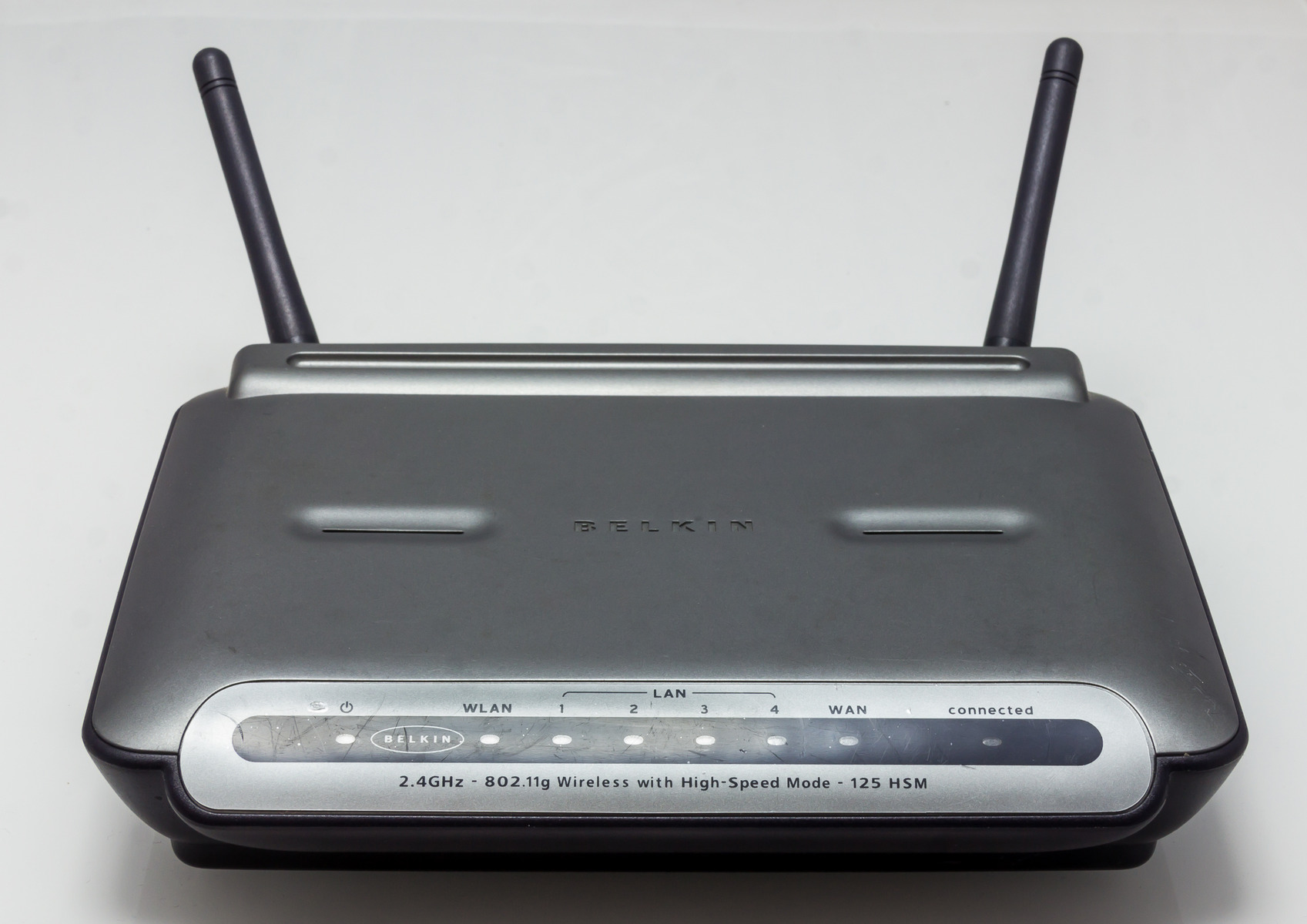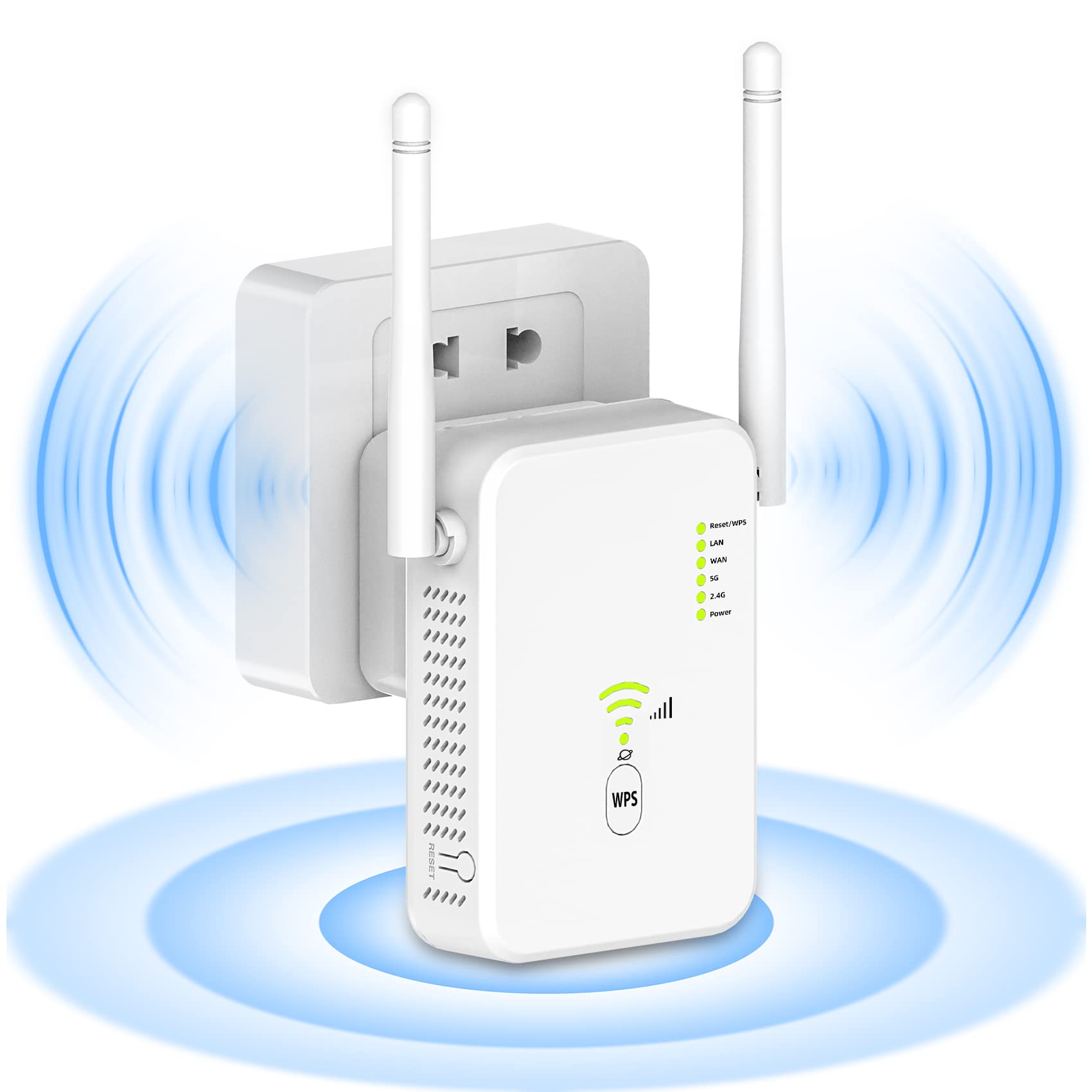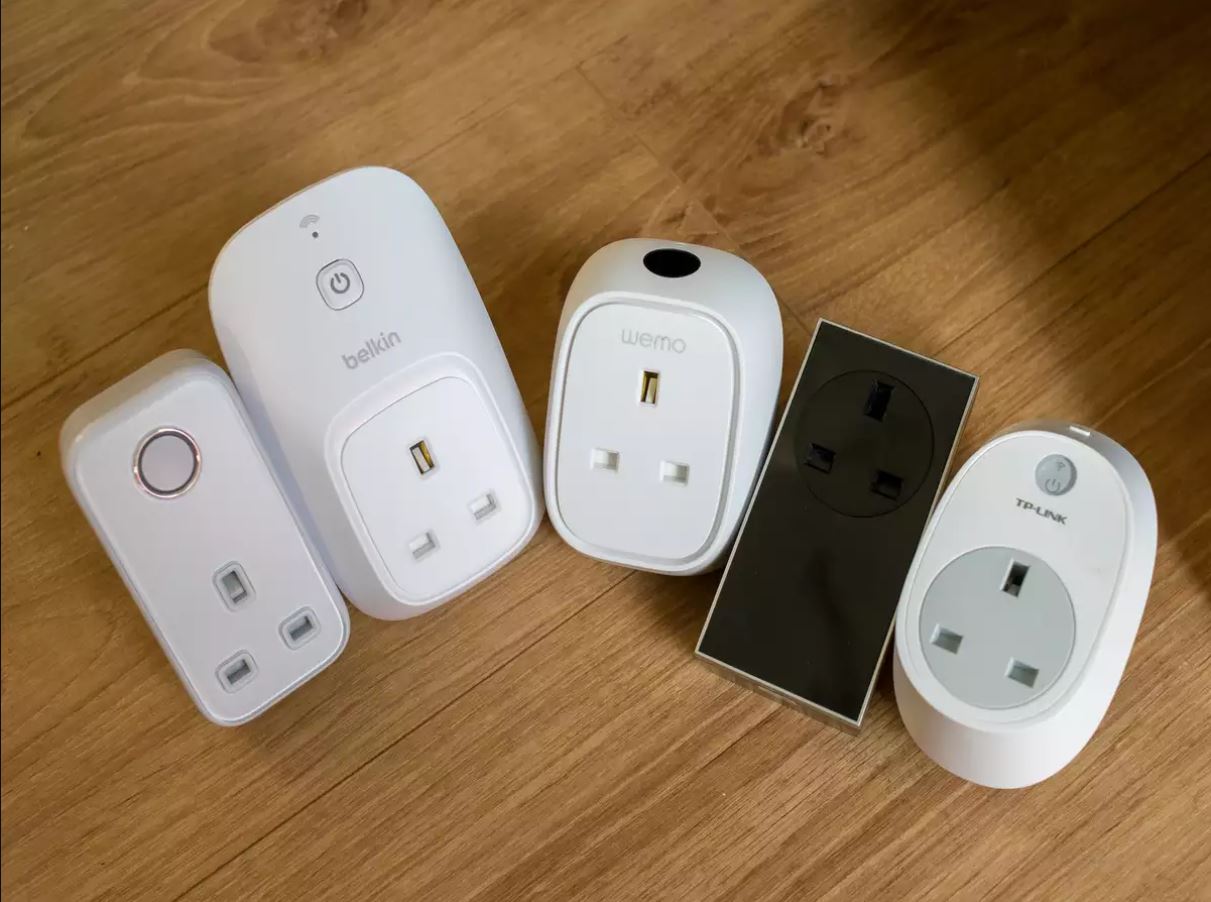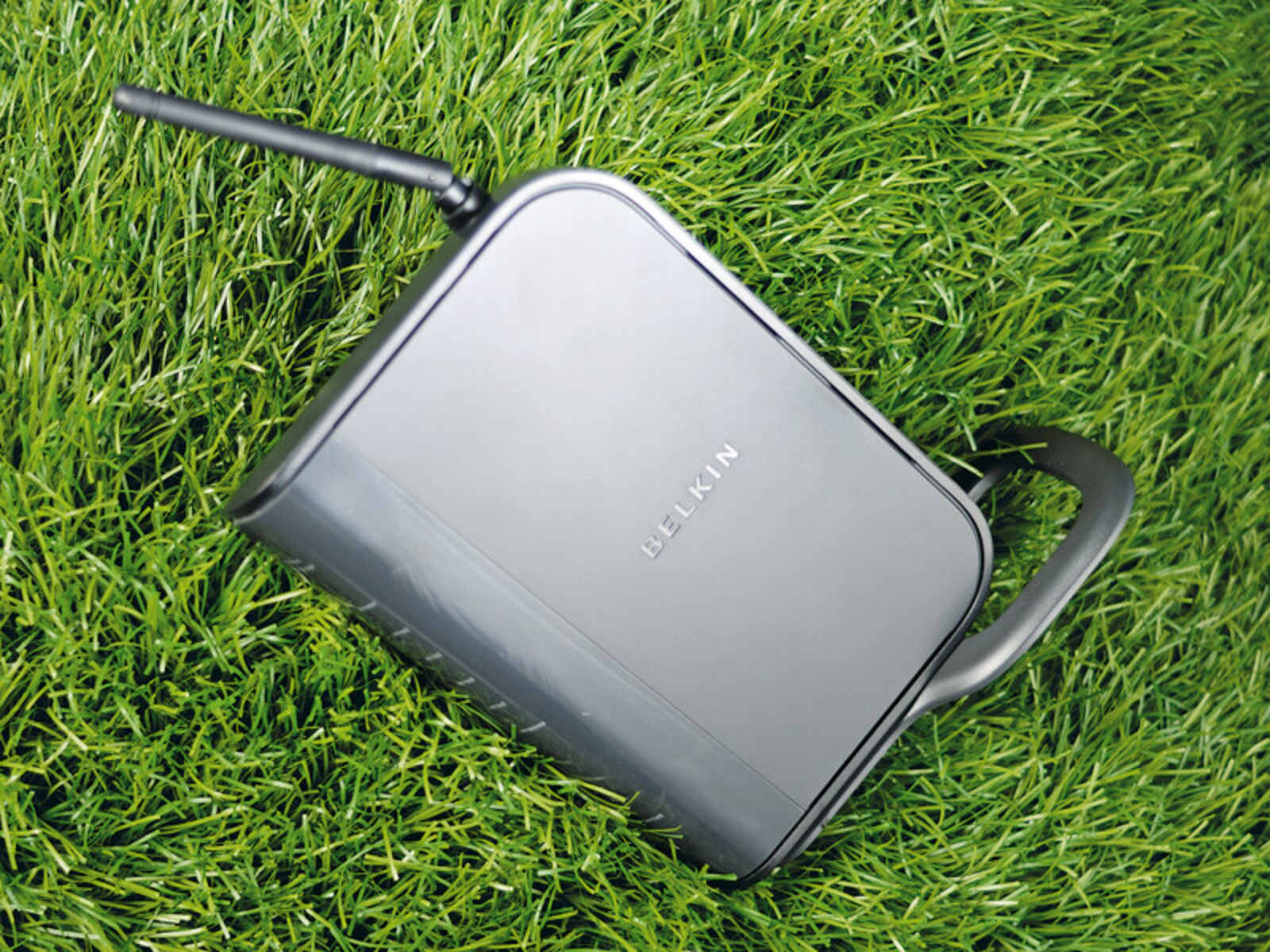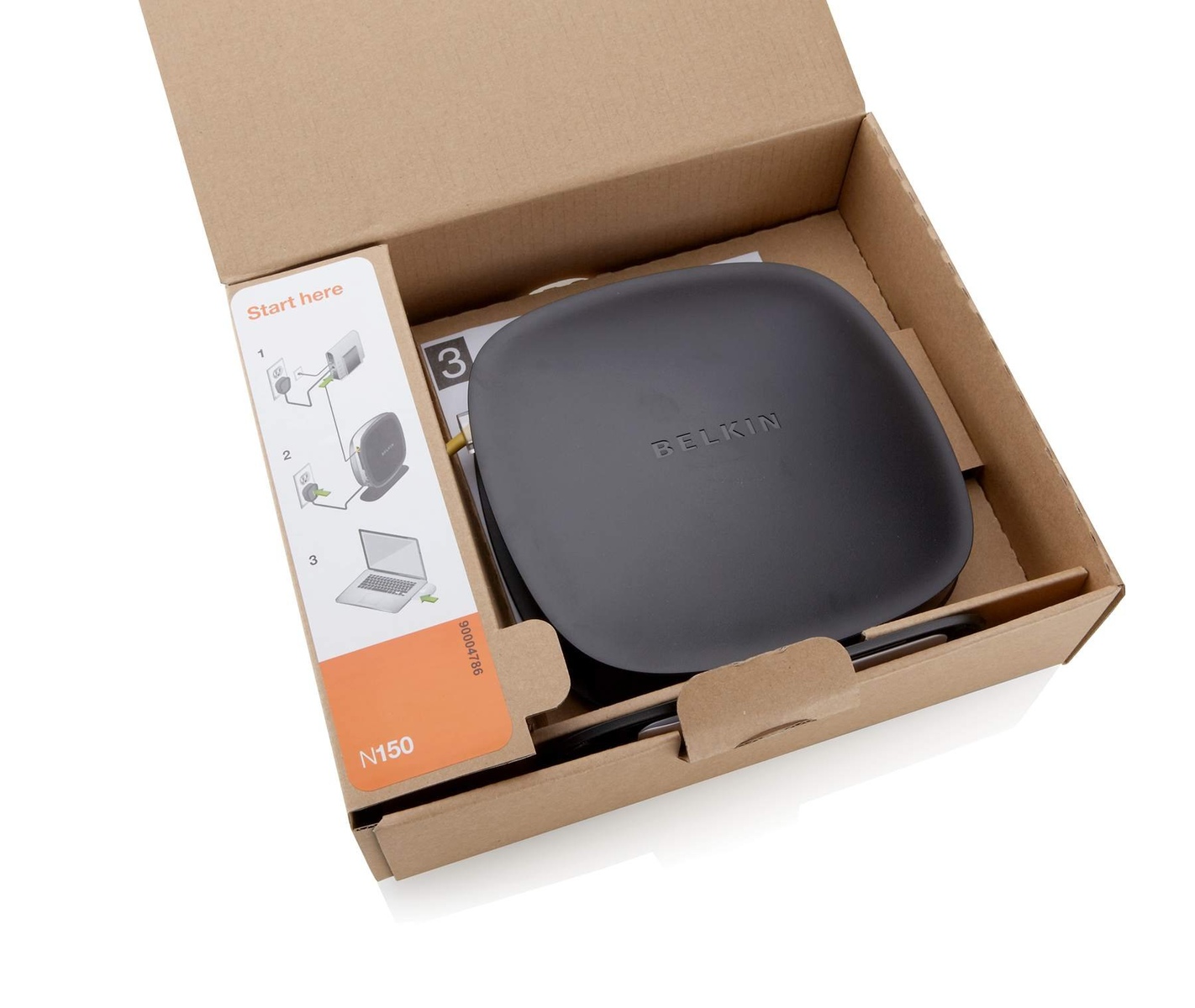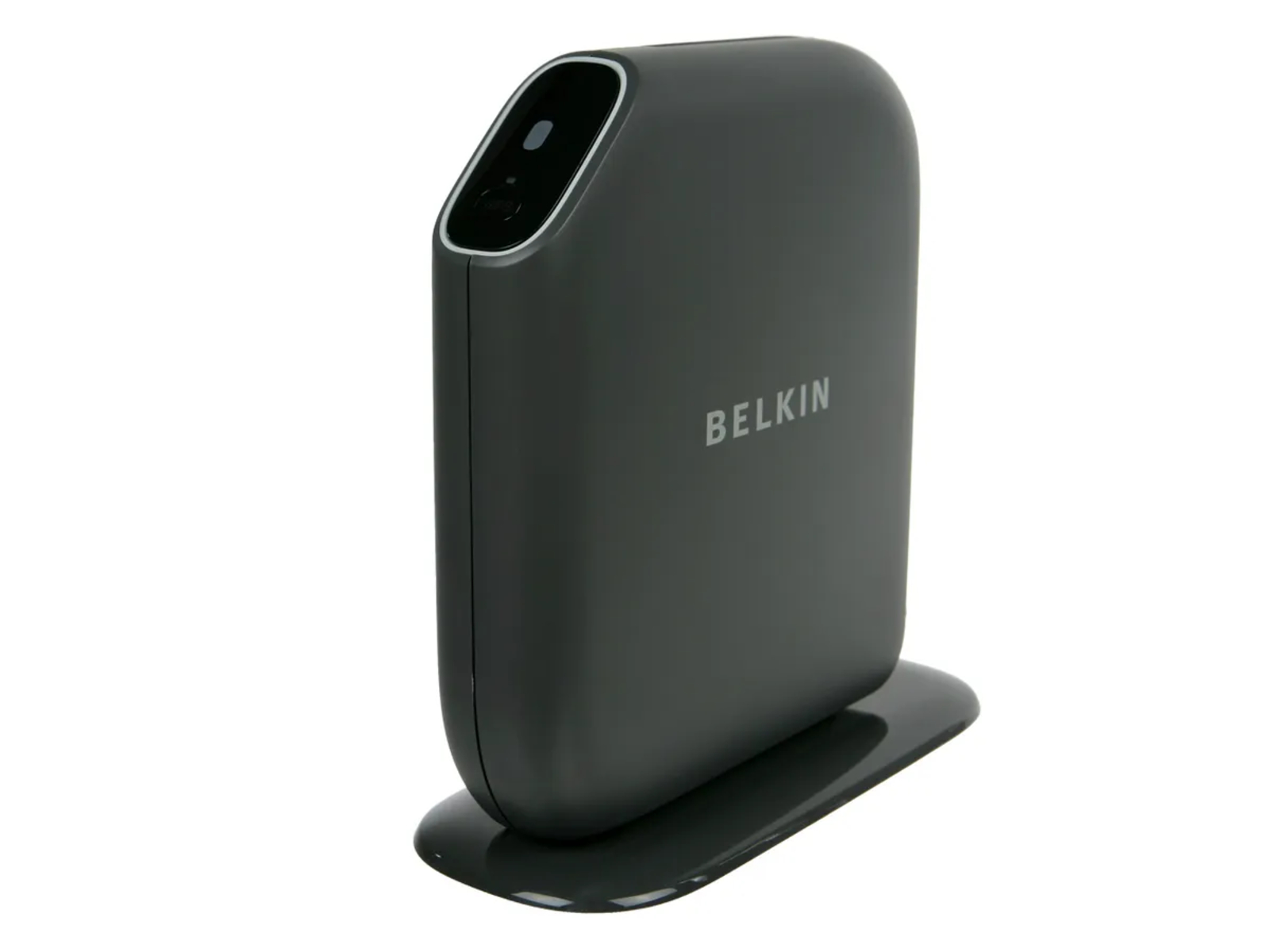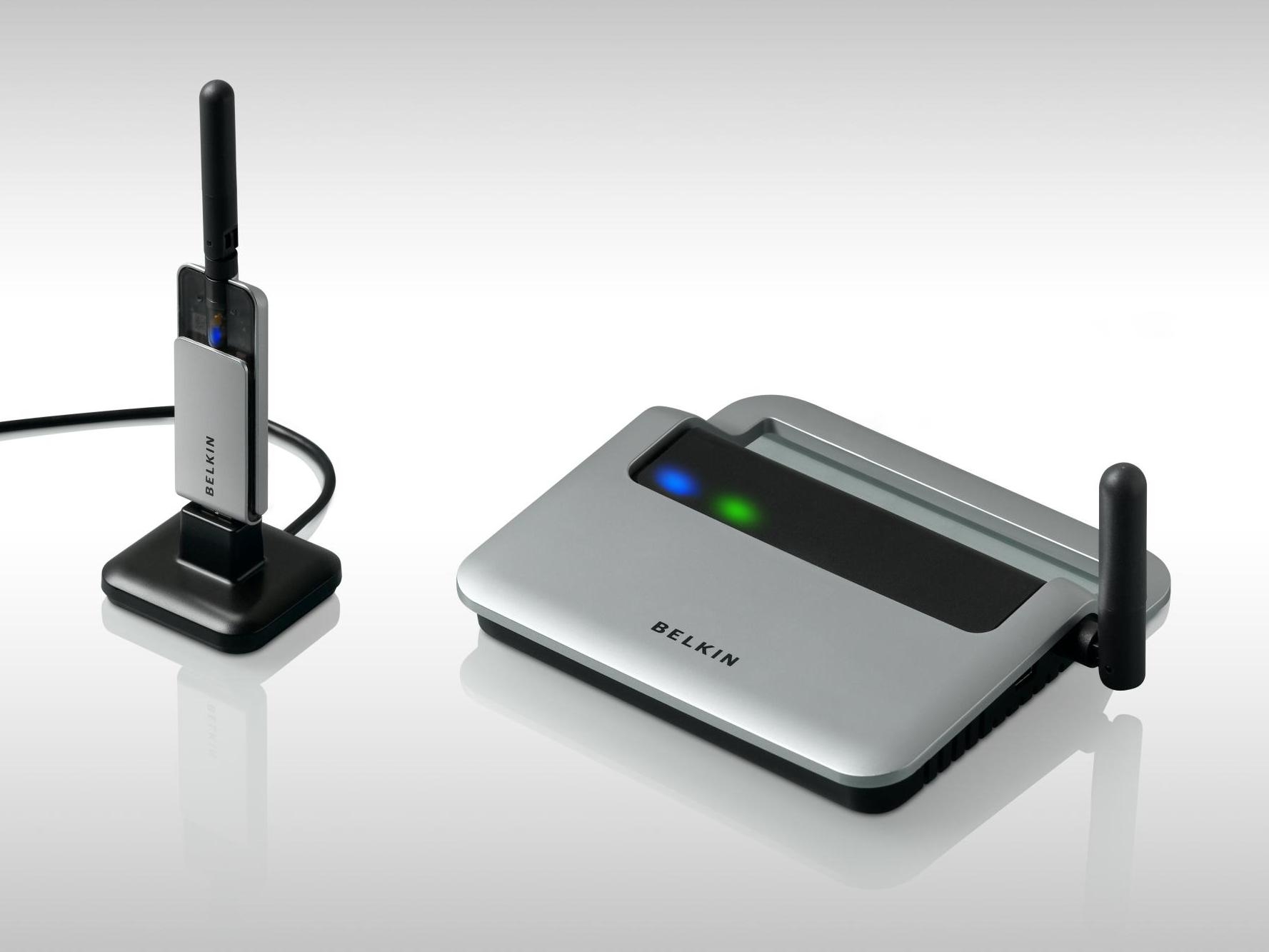Introduction
Having a Belkin wireless router can provide you with the convenience of connecting multiple devices to the internet without the hassle of wires. However, like any other electronic device, you might encounter some issues with your Belkin wireless router that can disrupt your internet connectivity. If you find yourself asking, “Why won’t my Belkin wireless router work?” don’t panic. This article will guide you through common issues and troubleshooting steps to help you get your router up and running smoothly again.
Belkin routers are known for their reliable performance and user-friendly interface. However, even the best routers can run into problems from time to time. The good news is that most issues can be resolved with some basic troubleshooting steps. By understanding the common issues that users experience with Belkin routers and how to address them, you can save time and frustration.
In this article, we will explore some of the most common problems that users face with Belkin wireless routers and provide you with step-by-step troubleshooting tips to resolve them. Whether your router isn’t powering on, your Wi-Fi connection keeps dropping, or you have trouble accessing the router’s admin panel, we’ve got you covered.
By following the troubleshooting steps outlined in this article, you’ll be able to troubleshoot and resolve many issues yourself. However, if you’re still experiencing problems after trying these steps, it may be necessary to reach out to Belkin’s customer support or consult with a professional technician for further assistance.
Common Issues with Belkin Wireless Routers
Belkin wireless routers are generally reliable, but like any technology, they can encounter issues. Understanding the common problems that users face with Belkin routers can help you troubleshoot and resolve them more efficiently. Here are some of the most common issues encountered with Belkin wireless routers:
- 1. Router Not Powering On: One of the common issues users face is a router that won’t power on. This could be due to a faulty power adapter, a loose power connection, or an overheating router. Troubleshooting steps include checking the power supply, ensuring the power outlet is functioning, and addressing any overheating issues.
- 2. Wi-Fi Connection Drops Frequently: If your Wi-Fi connection frequently drops, it can be frustrating. This issue can be caused by interference from other devices, outdated firmware, or signal obstructions. Troubleshooting steps include minimizing interference, updating firmware, and optimizing router placement for better Wi-Fi signal strength.
- 3. Router Not Connecting to the Internet: If your Belkin router has trouble connecting to the internet, it could be due to issues with your internet service provider (ISP), incorrect network settings, or a faulty modem. Troubleshooting steps include checking ISP status, verifying correct settings, and power cycling the modem and router.
- 4. Poor Wi-Fi Signal Strength: Weak Wi-Fi signal can cause slow internet speeds and dropped connections. This issue can be caused by router placement, physical obstructions, or outdated firmware. Troubleshooting steps include optimizing router placement, removing obstructions, and updating firmware.
- 5. Can’t Access Router’s Admin Panel: If you’re unable to access your router’s admin panel, it can impact your ability to modify settings. This issue can be caused by incorrect IP address, browser compatibility, or login credentials. Troubleshooting steps include checking the correct IP address, using a compatible browser, and resetting the router if necessary.
- 6. Router Not Recognizing Devices: If your Belkin router doesn’t recognize devices connected to it, it can be frustrating. This issue can be caused by outdated firmware, incorrect settings, or incompatible devices. Troubleshooting steps include updating firmware, checking settings, and ensuring device compatibility.
- 7. Firmware Update Failure: Updating the router’s firmware is important for security and performance enhancements. If the firmware update fails, it can lead to functionality issues. Troubleshooting steps include verifying router compatibility, ensuring a stable internet connection, and following the proper firmware update process.
- 8. Router Overheating: Overheating can cause router performance problems and even hardware damage. This issue can be caused by inadequate ventilation or continuous heavy usage. Troubleshooting steps include ensuring proper ventilation, avoiding excessive usage, and considering additional cooling options if necessary.
By understanding these common issues with Belkin wireless routers, you’ll be better prepared to troubleshoot and resolve problems that may arise. In the following sections, we will explore specific troubleshooting steps for each of these issues to help you get your Belkin wireless router working smoothly again.
Troubleshooting Steps for Belkin Wireless Router Problems
When facing issues with your Belkin wireless router, it’s essential to follow a systematic approach to troubleshoot and resolve the problem. By trying these troubleshooting steps, you can often resolve common issues without the need for professional assistance. Here are the step-by-step troubleshooting methods for various problems associated with Belkin wireless routers:
- Router Not Powering On:
- Check the power supply by ensuring the power adapter is securely connected to the router and the power outlet.
- Make sure the power outlet is functioning correctly by connecting another device to it.
- Verify if the router is overheating. If it feels unusually hot, place it in a well-ventilated area or use a cooling pad to prevent overheating.
- Wi-Fi Connection Drops Frequently:
- Minimize interference by keeping the router away from other electronics, cordless phones, and microwave ovens.
- Update the router’s firmware by accessing the admin panel and following the manufacturer’s instructions.
- Optimize router placement for better Wi-Fi signal strength by positioning it in a central location, away from obstructions such as walls and furniture.
- Router Not Connecting to the Internet:
- Check the status of your internet service provider (ISP) to ensure there are no outages in your area.
- Verify the correctness of your network settings, including the correct IP address, subnet mask, gateway, and DNS server addresses.
- Try power cycling your modem and router by unplugging them from the power source, waiting for a few seconds, and plugging them back in.
- Poor Wi-Fi Signal Strength:
- Optimize router placement by positioning it at a higher level and away from physical obstructions like walls and furniture.
- Remove any devices or objects that may be causing interference, such as cordless phones or appliances.
- Update the router’s firmware by accessing the admin panel and following the manufacturer’s instructions.
- Can’t Access Router’s Admin Panel:
- Verify that you’re using the correct IP address to access the router’s admin panel. The default IP address for Belkin routers is usually 192.168.2.1, but it may vary.
- Use a compatible web browser, such as Google Chrome or Mozilla Firefox, and clear the browser cache before trying again.
- If all else fails, reset the router to factory settings by pressing the reset button (usually located on the back of the router) for about 10 seconds. Note that this will erase all customized settings.
- Router Not Recognizing Devices:
- Check for firmware updates for both the router and the device you’re trying to connect. Update them if available.
- Ensure that the router’s settings are correctly configured to allow device connections, such as disabling MAC address filtering if it’s enabled.
- Verify if the device you’re trying to connect is compatible with the router or if any driver updates are needed.
- Firmware Update Failure:
- Verify if the firmware update you’re trying to install is compatible with your specific Belkin router model.
- Ensure a stable internet connection during the firmware update process. Use a wired connection if possible to minimize potential issues.
- Follow the manufacturer’s instructions carefully when updating the firmware, including any required steps or precautions.
- Router Overheating:
- Ensure that the router is placed in a well-ventilated area with sufficient airflow around it.
- Avoid continuous heavy usage of the router, which can contribute to overheating. Consider giving it rest periods, especially during extended downloading or streaming sessions.
- If necessary, use additional cooling options such as a cooling pad or a fan to prevent overheating.
- Check the Power Supply: Ensure that the power adapter is securely connected to both the Belkin router and a functioning power outlet. Sometimes, a loose connection can lead to the router not powering on. If possible, try using a different power adapter to rule out any issues with the adapter itself.
- Verify Power Outlet Functionality: To confirm if the power outlet is functioning correctly, plug another device into the same outlet and see if it powers on. If the outlet is not working, try using a different outlet or consider using a surge protector to prevent any power fluctuations that may affect the router’s performance.
- Check for Overheating: Overheating can also cause the router to not power on or perform properly. Feel the router to see if it feels excessively hot. In such cases, move the router to a well-ventilated area or use a cooling pad to prevent overheating. Ensuring proper airflow around the router can help improve its performance and prevent hardware damage.
- Minimize Interference: Wireless interference from other devices can disrupt the Wi-Fi signal, causing connection drops. Keep your Belkin router away from other electronics such as cordless phones, baby monitors, and microwave ovens. Additionally, ensure that the router is placed away from physical obstructions like walls and furniture to optimize signal strength.
- Update Firmware: Outdated firmware can contribute to connection issues. Access the router’s admin panel and check for firmware updates. If a newer version is available, follow the manufacturer’s instructions to update the firmware. This can help resolve bugs and improve the router’s overall performance.
- Optimize Router Placement: The location of your router plays a significant role in the strength and stability of the Wi-Fi signal. Position the router in a central location within your home or office. This can help ensure that the Wi-Fi signal reaches all areas without significant degradation. Additionally, consider elevating the router and avoiding placing it on the floor, as this can improve signal propagation.
- Check Internet Service Provider (ISP) Status: Before troubleshooting your router, verify if there are any known internet outages or service disruptions in your area. This can usually be done by visiting your ISP’s website or contacting their customer support.
- Verify Network Settings: Incorrect network settings can hinder your router from connecting to the internet. Ensure that the IP address, subnet mask, default gateway, and DNS server addresses are correctly configured. You can usually access these settings through the router’s admin panel. Refer to the router’s user manual or visit the manufacturer’s website for guidance.
- Power Cycle the Modem and Router: Temporarily disconnect the power supply from both your modem and Belkin router. Wait for approximately 30 seconds before plugging them back in. This simple power cycling process can refresh the connection and resolve certain connectivity issues.
- Optimize Router Placement: The placement of your router plays a crucial role in its range and signal strength. Position the Belkin router in a central location within your home or office, away from physical obstructions like walls and large furniture. Elevating the router to a higher position can also improve signal propagation.
- Remove Obstructions: Physical obstructions, such as walls and large objects, can impede the Wi-Fi signal and result in poor signal strength. Try to minimize the number of obstacles between your Belkin router and the devices you want to connect to it. Consider the layout of your space and reposition the router or devices accordingly to optimize signal strength.
- Update Firmware: Outdated firmware can impact the performance and signal strength of your Belkin router. Access the router’s admin panel and check for any available firmware updates. If an update is available, follow the manufacturer’s instructions to install it. Updating the firmware can resolve bugs and improve the overall performance of your router.
- Verify the Correct IP Address: Ensure that you’re using the correct IP address to access the router’s admin panel. The default IP address for Belkin routers is commonly 192.168.2.1, but it can vary depending on the model. Check the router’s documentation or the manufacturer’s website for the correct IP address.
- Use a Compatible Web Browser: Some older routers may have compatibility issues with certain web browsers. Ensure that you’re using a compatible browser, such as Google Chrome, Mozilla Firefox, or Internet Explorer. Try accessing the admin panel from a different browser to see if that resolves the issue.
- Clear Browser Cache: Clearing your browser’s cache and cookies can help resolve login issues. Go to your browser’s settings and clear the cache and cookies. After doing so, close and reopen the browser before attempting to access the router’s admin panel again.
- Check for Firmware Updates: Outdated firmware can sometimes lead to compatibility issues with certain devices. Access the router’s admin panel and check for any available firmware updates. If updates are available, follow the manufacturer’s instructions to install them. Updating the firmware can often resolve compatibility issues and improve device recognition.
- Verify Router Settings: Ensure that the router’s settings are correctly configured to allow device connections. Check if there are any restrictions or security settings that could be preventing devices from being recognized. For example, check if MAC address filtering is enabled and if the device’s MAC address is added to the allowed list. Adjust the settings as necessary to allow device recognition.
- Ensure Device Compatibility: Some devices may not be compatible with your Belkin router due to technical limitations or outdated drivers. Verify the device’s compatibility with the router and check for any available driver updates. Visit the manufacturer’s website for the device and download the latest drivers if necessary.
- Verify Router Compatibility: Before updating the firmware, ensure that the firmware you’re trying to install is compatible with your specific Belkin router model. Using an incompatible firmware version can lead to update failure and potentially harm the router’s functionality.
- Ensure a Stable Internet Connection: A stable and reliable internet connection is crucial during the firmware update process. Any disruptions or fluctuations can cause the update to fail. To ensure stability, connect your computer to the router via an Ethernet cable instead of relying on a wireless connection.
- Follow the Proper Firmware Update Process: It’s important to follow the manufacturer’s instructions and guidelines for updating the firmware. Different router models may have specific procedures, such as downloading the firmware file from the Belkin support website or using a built-in update feature in the router’s admin panel. Carefully follow these steps to avoid any potential pitfalls.
- Ensure Proper Ventilation: Check the area around your router to ensure that there is sufficient airflow. Make sure that the router is not placed in an enclosed space, such as a cabinet, where heat can accumulate. Also, ensure that the router’s vents are not blocked by objects or dust. Providing proper ventilation helps dissipate the heat generated by the router and prevents overheating.
- Avoid Continuous Heavy Usage: Overburdening the router with excessive data transfer, prolonged downloading, or continuous streaming can generate excessive heat. If you notice that your router becomes excessively hot during heavy usage, consider taking breaks or limiting the usage time to allow the router to cool down.
- Consider Additional Cooling Options: For routers that consistently experience overheating issues, you can consider using additional cooling options. This could include placing a small fan in the vicinity of the router to provide extra airflow or using a cooling pad designed specifically for routers. These cooling solutions can help manage temperature levels and prevent overheating.
If your Belkin router fails to power on, follow these steps to troubleshoot the issue:
If your Belkin router experiences frequent Wi-Fi connection drops, try these troubleshooting steps:
If your Belkin router is unable to connect to the internet, follow these troubleshooting steps:
If you’re experiencing weak Wi-Fi signal strength, use these troubleshooting steps:
If you’re unable to access your Belkin router’s admin panel, try these troubleshooting steps:
If your Belkin router is not recognizing devices, follow these troubleshooting steps:
If you’re unable to update the firmware of your Belkin router, try these troubleshooting steps:
If your Belkin router is overheating, use these troubleshooting steps:
By following these troubleshooting steps, you can often resolve common issues with your Belkin wireless router. However, if you’re still experiencing problems, it may be necessary to seek further assistance from Belkin’s customer support or consult with a professional technician.
Issue #1: Router Not Powering On
One of the frustrating issues users may encounter with their Belkin wireless router is the router not powering on. When this happens, it can prevent you from accessing the internet and connecting to your network. However, this issue can often be resolved by following a few troubleshooting steps:
By following these troubleshooting steps, you can often resolve the issue of your Belkin router not powering on. However, if the problem persists even after trying these steps, it may indicate a more significant hardware issue. In such cases, it is advisable to reach out to Belkin’s customer support or consult a professional technician for further assistance.
Issue #2: Wi-Fi Connection Drops Frequently
Dealing with a Belkin wireless router that frequently drops the Wi-Fi connection can be incredibly frustrating. Fortunately, there are several troubleshooting steps you can take to address this issue and improve the reliability of your wireless connection. Here’s what you can do:
By following these troubleshooting steps, you can often address the issue of your Belkin router frequently dropping the Wi-Fi connection. It’s important to note that if you live in a densely populated area or if there are other Wi-Fi networks in close proximity, interference may be unavoidable. In such cases, using a dual-band router or upgrading to a higher frequency band can help mitigate this problem. If the Wi-Fi connection drops persist despite these efforts, it may be worth reaching out to Belkin’s customer support or seeking assistance from a network specialist to further diagnose and resolve the issue.
Issue #3: Router Not Connecting to the Internet
Experiencing a Belkin router that is not connecting to the internet can be frustrating, as it prevents you from accessing online services and browsing the web. However, this issue can usually be resolved by following a series of troubleshooting steps. Here’s what you can do to address this problem:
By following these troubleshooting steps, you can often rectify the issue of your Belkin router not connecting to the internet. However, if the problem persists even after trying these steps, it may indicate a more complex issue that requires further investigation. In such cases, it’s advisable to contact your ISP to ensure there are no service interruptions specific to your connection. Alternatively, you may consider reaching out to Belkin’s customer support or consulting a professional technician for further assistance.
Issue #4: Poor Wi-Fi Signal Strength
Dealing with poor Wi-Fi signal strength from your Belkin router can result in slow internet speeds and dropped connections. Fortunately, there are several troubleshooting steps you can take to improve the signal strength and enhance your wireless network performance. Here’s what you can do to address this issue:
By following these troubleshooting steps, you can often improve the Wi-Fi signal strength from your Belkin router. However, it’s important to note that environmental factors, such as interference from neighboring Wi-Fi networks or the placement of electronic devices, can also affect signal strength. In some cases, upgrading to a dual-band or higher frequency router may be beneficial. If the Wi-Fi signal strength issues persist despite attempts to optimize your setup, consider reaching out to Belkin’s customer support or seeking assistance from a network specialist to further diagnose and resolve the issue.
Issue #5: Can’t Access Router’s Admin Panel
Being unable to access your Belkin router’s admin panel can prevent you from making necessary configuration changes to your network settings. If you find yourself in this situation, there are several troubleshooting steps you can take to regain access. Here’s what you can do:
If you’ve tried these troubleshooting steps and still can’t access the admin panel, a factory reset of the router may be necessary. Keep in mind that performing a factory reset will erase any customized settings and revert the router to its default configuration. To reset the router, locate the reset button (usually on the back of the router) and press and hold it for about 10 seconds. Once the reset is complete, you should be able to access the admin panel using the default login credentials specified in the router’s documentation or provided by the manufacturer.
If you’re still unable to access the router’s admin panel after a factory reset, it may indicate a more serious issue. In such cases, it’s recommended to reach out to Belkin’s customer support or consult a professional technician for further assistance and troubleshooting.
Issue #6: Router Not Recognizing Devices
It can be frustrating when your Belkin router fails to recognize devices that are connected to it. This issue can prevent you from accessing the internet or utilizing network functionalities. However, there are several troubleshooting steps you can take to address this problem and ensure that your router recognizes the connected devices correctly. Here’s what you can do:
By following these troubleshooting steps, you can often resolve the issue of your Belkin router not recognizing devices. However, if the problem persists even after trying these steps, it may be helpful to reach out to Belkin’s customer support for further assistance. They can provide specific guidance and troubleshooting steps tailored to your router model and the devices you’re trying to connect.
Issue #7: Firmware Update Failure
Updating the firmware of your Belkin router is important to ensure that it has the latest features, security patches, and performance improvements. However, sometimes the firmware update process can encounter issues, leading to failure. If you’re experiencing a firmware update failure with your Belkin router, here are some troubleshooting steps you can take to address the issue:
If you’re still encountering firmware update failure despite following the troubleshooting steps above, it may be beneficial to reach out to Belkin’s customer support for further assistance. They can provide specific guidance based on your router model and help resolve any firmware update issues you’re experiencing. It’s worth noting that attempting to manually modify or install firmware from unofficial sources can void the warranty and potentially damage the router, so it’s crucial to seek official support and adhere to the manufacturer’s guidelines.
Issue #8: Router Overheating
If your Belkin router is overheating, it can lead to performance issues, connectivity problems, and even hardware damage. Overheating typically occurs due to inadequate ventilation or prolonged heavy usage. To address this issue and prevent future overheating problems, consider the following troubleshooting steps:
By following these troubleshooting steps, you can often address the problem of your Belkin router overheating. However, if the issue persists and the router continues to overheat, it may indicate a defect or a more serious hardware issue. In such cases, reaching out to Belkin’s customer support for further assistance is advisable. They can provide specific guidance and further troubleshoot the overheating issue with your router model.
Conclusion
Belkin wireless routers are reliable and user-friendly devices that provide convenient internet connectivity. However, they can encounter issues from time to time. By being aware of the common problems faced by Belkin router users and following the troubleshooting steps outlined in this article, you can resolve many of these issues on your own.
We covered several common issues, including routers not powering on, Wi-Fi connection drops, failure to connect to the internet, poor Wi-Fi signal strength, inability to access the router’s admin panel, devices not being recognized, firmware update failures, and router overheating. For each issue, we provided step-by-step troubleshooting methods to address and resolve the problem.
Remember, if you’ve tried the troubleshooting steps and are still experiencing problems with your Belkin router, it’s always a good idea to reach out to Belkin’s customer support or consult with a professional technician. They can provide further assistance and guidance specific to your router model and situation.
Lastly, as technology constantly evolves, it’s essential to keep your Belkin router’s firmware up to date and stay informed about any new software updates released by the manufacturer. Regularly check for firmware updates and install them as necessary to ensure optimal performance, security, and compatibility with your devices.
With the troubleshooting steps and tips provided in this article, you can successfully troubleshoot and resolve common issues with your Belkin wireless router. By maintaining a reliable and well-functioning router, you can continue to enjoy uninterrupted internet connectivity and a seamless online experience.







